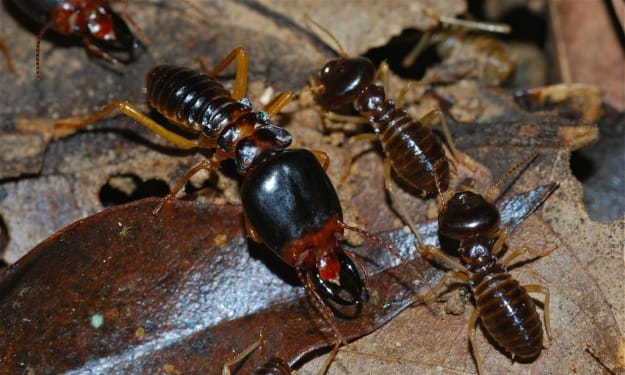The peacock fish is very popular among fish lovers
Selection of white seeds for blue-tailed dresses

Blue-tailed dress white sub referred to as blue and white, is a blue-tailed dress of a white sub body color of a form of expression, with an attractive sky blue color, and the majority of peacock fish lovers love it. To raise this species well and beautifully takes a certain amount of effort and time. Here I will briefly introduce the three aspects of seed selection, purification, maintenance, and hybridization, and hope to help you, the peacock fish fascinated.
I. Selection of breed
1. Selection of breeding male
The age of the fish is 4 months old, the male fish of this age, the various parts of the body have been expressed, roughly able to see whether the excellent individual, and later, it is possible to better judge whether the fish show degree closer to the standard of the tournament, but the fish also because of the age of the fish, and the mating ability will also decline.
Breeding male criteria.
Strong body; thick tail barrel; strong vitality; tail and back of the same color and open-angle; blue color and thicker; no spray point miscellaneous flowers; high dorsal fin hardness, more upright. Usually more spacious, and the length reaches 1/2 of the tail (too long is also not qualified); tail fin is triangular, the upper and lower two angles as much as possible out of the angle, try not to choose rounded corners; tail dorsal sinew is thicker, the thickness is obvious, but can not be pleated; tail fin edge smooth, can not have a serrated edge.
2. Selecting the breeding female
The breeding female can be selected from 3.5-5 months old, provided that the female must be used, and must be a virgin female, otherwise, the sperm storage function of the female will cause the subsequent litters of small fish can not accurately determine whether their sire is the male you selected.
Breeding female criteria.
Strong body; slightly inflated abdomen; obvious fetal spots; thick tail barrel; strong vitality; transparent body color and the same blue tail and back; triangular and upright dorsal fins, not inverted; large thickness of the tail and back and not easily transparent; shark tail type tail fins.

3. elimination
Red-running individuals that should be eliminated
Orchid body that should be eliminated
Blue and white like a blue dress and orchid, the offspring will appear as some running red individuals and oxidized bodies. These two types of fish also have a nice name on the ground. Running red is called coral red blue and white, fire clouds blue and white, the oxidized body is called super white, it is said that the mother of super white colorless transparent, can give a variety of fish to breed, without affecting its grain color, all bullshit. These two kinds of fish, if you are trying to play nice and professional, it is best to just throw away, it has no value to us and will only pull down the quality of the offspring.
4. Commercial selection model
In the market, the price of a blue normal body will be higher than the running red body, so the bulk breeders also want to Lethe t more normal body, but how to do it, a litter will normally produce more than one and a half running red body and organization body, can get few normal body left. There is a formula to learn from, that is, using the red male to mating with the female of the orchid body, the offspring will get all normal blue and white peacock fish.
Since we can get such a high percentage of normal bodies this way, why don't we combine them this way? Here you first follow the scoring criteria of our tournament to compare, we require this species should be triangular tail type, that is, as I just said, choose male fish to focus on tail type, choose female fish to pick shark tail, only this combination, you can get the tail type you want. I don't know if you noticed, but the female of the orchid body has a shark tail. Unfortunately, the females of the oxidized body are round-tailed, and the offspring born from the females of this tail type will screw up the excellent triangular tail type gene directly, and the performance of the male offspring will say round not round, say triangular, not triangular, and cannot reach the standard of continuation of the breeding. In the end, only the whole line of fish to the embarrassing situation of elimination.
Second, the purification of several ways
The purpose: to select the best-combined tank, a strong combination.
The ideal breeding male and female for pairing, to quality pure, genetic accuracy, it is recommended to a male and a female way to pair. Instead of the usual breeding group of four males and two females.
1. Selection from the same litter (self-breeding)
This way is the most common and easiest way to purify. When the litter reaches 2 months of age, the males show their sex characteristics and can chase the females before they are reared in separate tanks. The purity of the females is guaranteed. When they reach 4 months of age and the males have reached 80%, select the most preferred male and female, combine the two and keep them separately. At this time the more in place the performance of the male fish often because the tail is carried out too large, and the less likely to chase the breeding female, we can then use tail cutting to help the male fish, reduce the burden and early fatherhood.
Advantages: the male and female fish contain some excellent genes similar to each other, easy to purify a good individual.
Disadvantages: defective genes will also be gradually amplified, and problems such as the weakening of the physique will follow.
2. choose from different nests in the same line
In layman's terms, inbreeding is used, which means that the male and female fish you choose will be related to each other, perhaps by the same grandparents or the same maternal grandparents.
Pros: The genes will not be too close, causing defects in the offspring to be amplified in a short period.
Disadvantage: the difficulty of purification will also become difficult with genetic distancing.
3. Crossbreeding of different lines
Select two lines of fish that are distantly related to each other for a purposeful combination. Remember the keyword, purposeful. For example, your line of blue and white tail fins has outstanding performance, and genetic stability, to stabilize and maintain the outstanding characteristics of this line of fish tail fins, you went to buy a line of Malaysian blue and white, in advance you need to understand the fish to be introduced to the overall performance, the same nest performance, stability and other key elements, the introduction of it and your fish for crossbreeding and then purification. (This crossbreeding action is more complex, three sentences can not say, another day dedicated to opening the topic)
Advantages: robust body; more distant blood, not easily degraded; rich gene pool (first self-breeding it alone, and then go and combine with your blue and white).
Disadvantages: Although the combination is strong, it may not be as good as it should be.
4. reverse cross
2.5-month-old baby blue and white (male)
Back crossing is the combination of the offspring and the parents to strengthen a certain genetic characteristic for breeding. For example, if the parental male is darker, and the offspring is satisfactory in all aspects, but the color is not as good as it should be. In this case, we use a mating method in which the female offspring crosses the male parent. This is the most difficult way to breed, and it is not easy to control the fire. So what is the difficulty? When the offspring females enter the breeding age of at least three months, the parental males at this time still can reproduce to put a question mark. Some people say that offspring males are generally able to chase females in less than three months, so it's not easier to choose an offspring male to fight a parent female. You ignore a problem, we need the continuation of the excellent genes of the progeny male, you choose the progeny female is not easy to complete your overall requirements for the blue and white it. At the same time, the female fish also can store sperm, even after this operation, the offspring of male fish mating out of the offspring may not be their children, it is likely to give birth to their brothers, ha ha ha, this understanding may be a bit brain-burning, the partners take their time to understand it!
Third, the maintenance and hybridization
In nature the long-term genetic stability and continuous progress of the population, we have to carry out purposeful in-breeding and out-breeding of the blue and white in their tank.
1. Maintenance between whites
Example: The method of using two lines of blue and white selected from different areas to combine by inter crossing is the method of maintenance between whites as I mentioned before.
2. Maintenance between whites and wild colors
We use the strong performance and disease resistance of the wild color gene to make a combination of intern cross between white and wild.
Example: Blue and white with the blue-tailed dress. The offspring (F) will all show the wild color, then go to the F obtained by self-crossing, and 1/4 of the blue and white will appear. Then you select and breed the individuals that meet the standard from this small number of white subs to do the action of self-breeding for purification.
3. Crossing between different breeds
This between different species to do will be a bit complicated, To get it wrong the offspring will be all messed up, and even after continuous advancement, the original breeding fish is far from the original. It is likely to be a failure. However, as long as there is a little chance, then we can choose to try.
Example: blue and white with orchid; blue and white with roman; blue and white with yellow dress, etc. All of these require a lot of courage and patience on the part of the breeder, and plenty of time and energy to do the purification actions. Everything is possible.
About the Creator
Taufik Olu
Money is round. It rolls away.






Comments
There are no comments for this story
Be the first to respond and start the conversation.